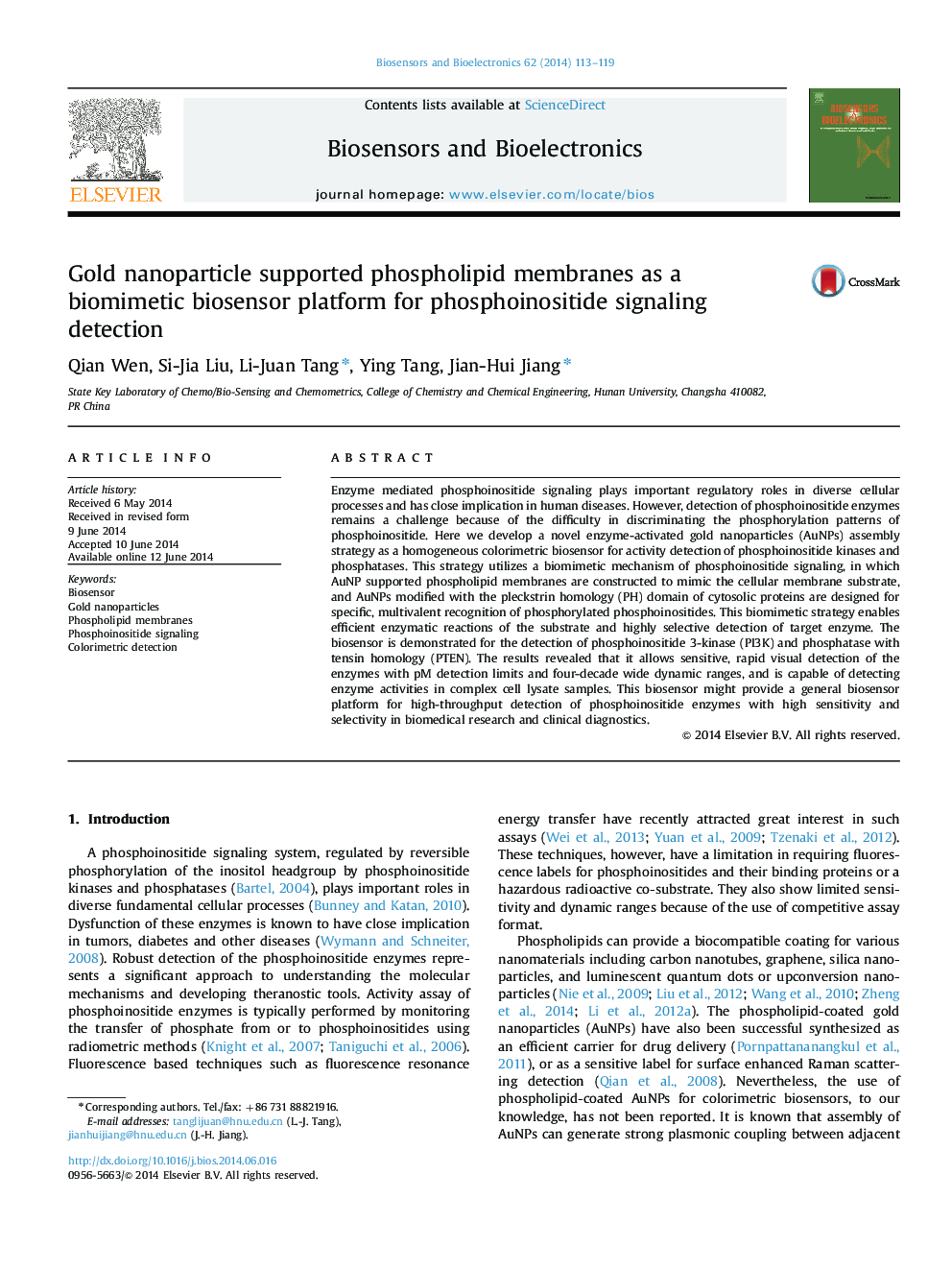| Article ID | Journal | Published Year | Pages | File Type |
|---|---|---|---|---|
| 7232963 | Biosensors and Bioelectronics | 2014 | 7 Pages |
Abstract
Enzyme mediated phosphoinositide signaling plays important regulatory roles in diverse cellular processes and has close implication in human diseases. However, detection of phosphoinositide enzymes remains a challenge because of the difficulty in discriminating the phosphorylation patterns of phosphoinositide. Here we develop a novel enzyme-activated gold nanoparticles (AuNPs) assembly strategy as a homogeneous colorimetric biosensor for activity detection of phosphoinositide kinases and phosphatases. This strategy utilizes a biomimetic mechanism of phosphoinositide signaling, in which AuNP supported phospholipid membranes are constructed to mimic the cellular membrane substrate, and AuNPs modified with the pleckstrin homology (PH) domain of cytosolic proteins are designed for specific, multivalent recognition of phosphorylated phosphoinositides. This biomimetic strategy enables efficient enzymatic reactions of the substrate and highly selective detection of target enzyme. The biosensor is demonstrated for the detection of phosphoinositide 3-kinase (PI3K) and phosphatase with tensin homology (PTEN). The results revealed that it allows sensitive, rapid visual detection of the enzymes with pM detection limits and four-decade wide dynamic ranges, and is capable of detecting enzyme activities in complex cell lysate samples. This biosensor might provide a general biosensor platform for high-throughput detection of phosphoinositide enzymes with high sensitivity and selectivity in biomedical research and clinical diagnostics.
Keywords
Related Topics
Physical Sciences and Engineering
Chemistry
Analytical Chemistry
Authors
Qian Wen, Si-Jia Liu, Li-Juan Tang, Ying Tang, Jian-Hui Jiang,
